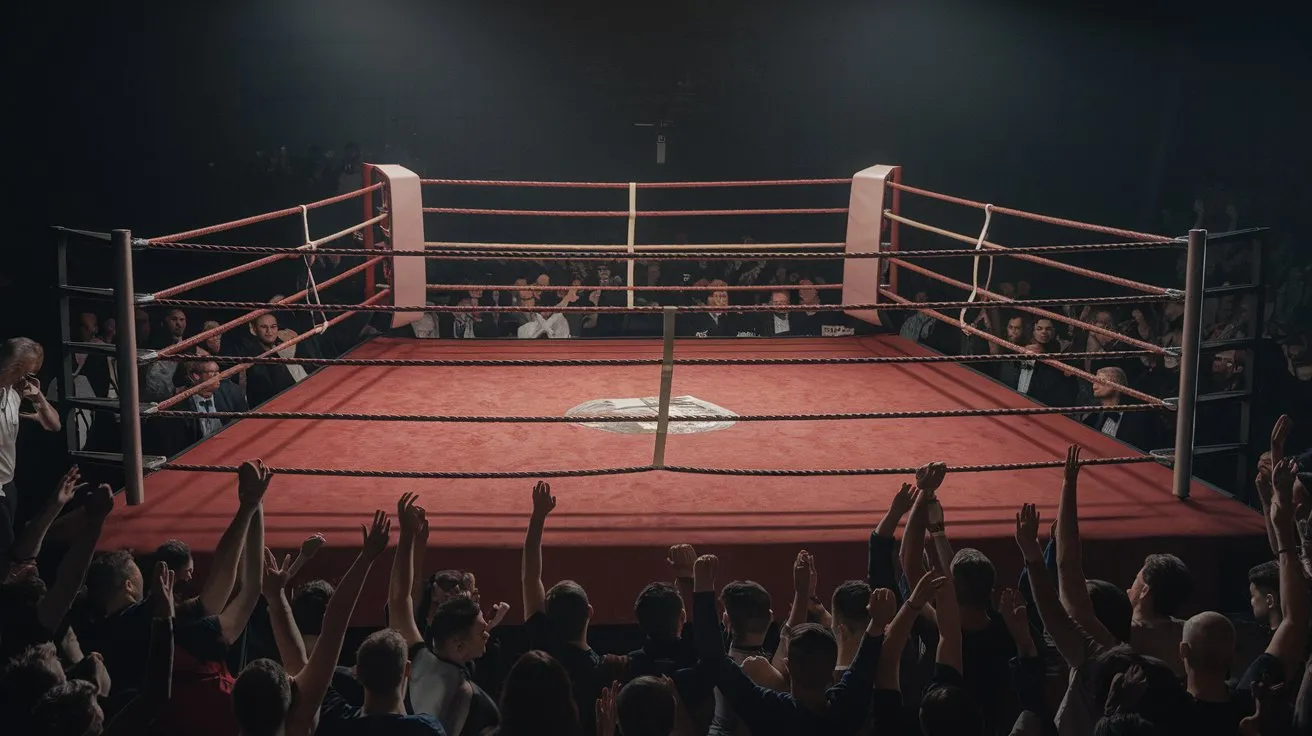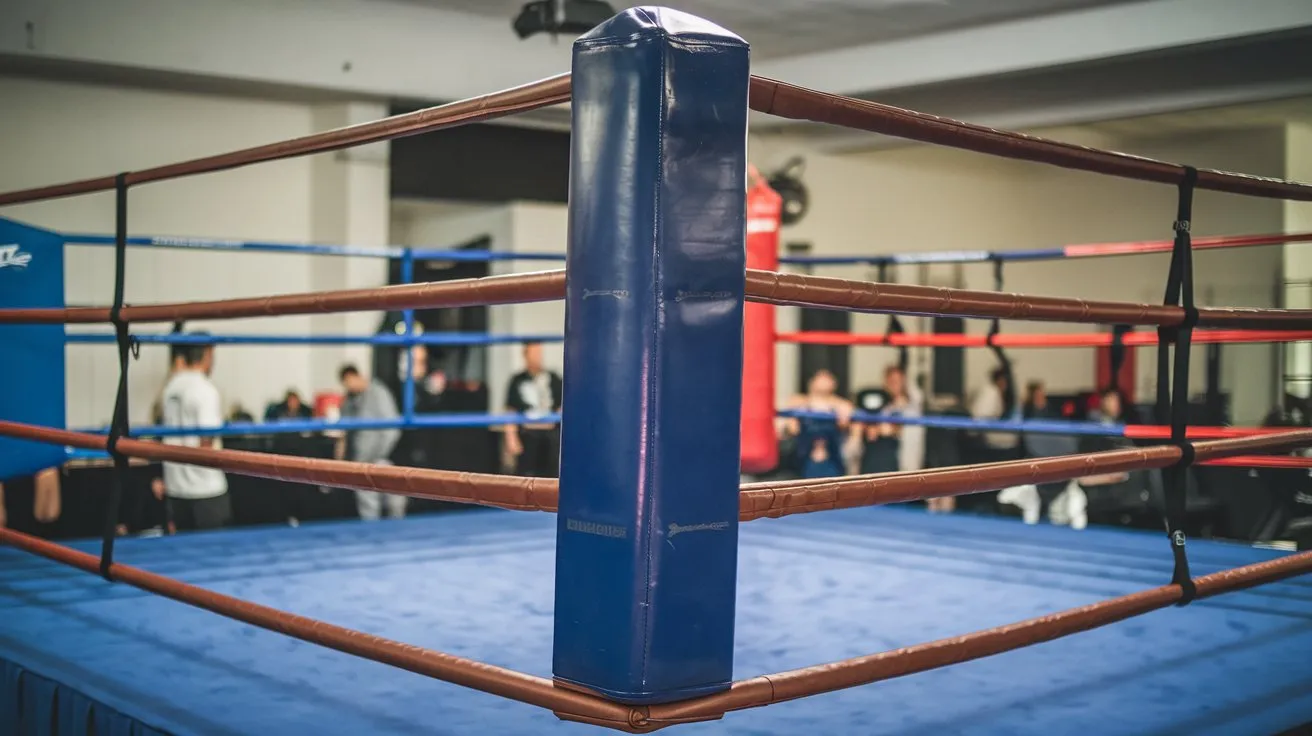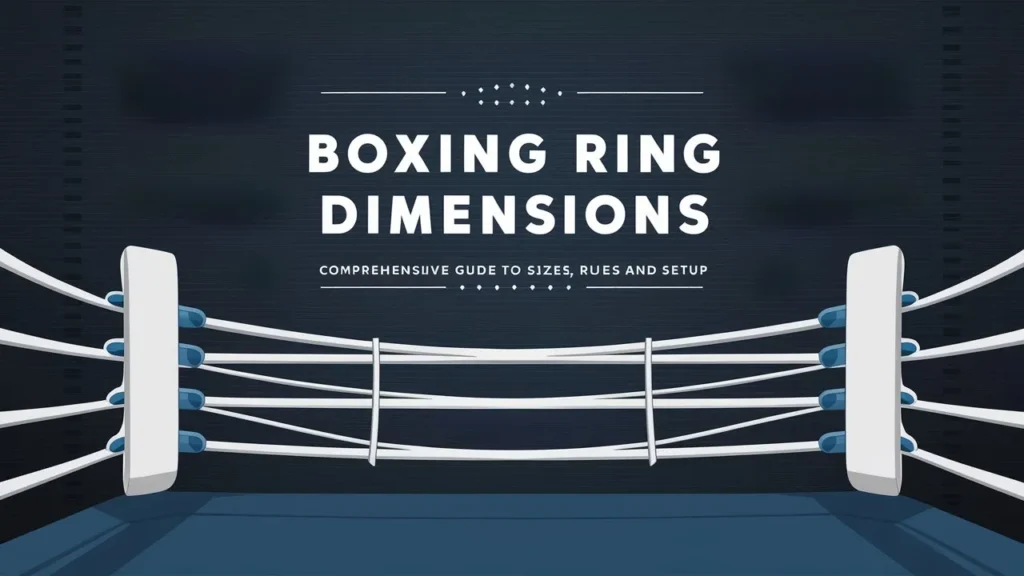Introduction To The Boxing Ring Dimensions
Boxing is more than just a sport—it’s a blend of athleticism, strategy, and grit. While the action inside the ring often captures the audience’s attention, the ring itself plays a crucial role in the sport’s dynamics. The dimensions of a boxing ring can influence how a match unfolds, dictating the space for footwork, offense, and defense. Boxing Ring Dimensions Guide Whether you’re setting up a boxing ring for professional matches, training, or amateur events, understanding its dimensions is essential.
In this article, we will explore the importance of boxing ring dimensions, diving into the standard sizes used in various competitions. We’ll also touch on the key factors influencing ring design and how different ring sizes impact the fighters’ performance. So, whether you’re a boxing enthusiast, gym owner, or event organizer, this guide will provide you with all the necessary insights.
Why Boxing Ring Dimensions Matter
Boxing ring dimensions are crucial because they set the physical boundaries of the sport. The space affects fighters’ movement, strategy, and safety. Too small a ring may limit a fighter’s ability to utilize footwork, while too large a ring can disadvantage those who rely on staying close to their opponent.
In professional boxing, the ring size is often standardized, but amateur and training rings may vary in size. A smaller ring favors aggressive fighters, forcing more frequent exchanges and close combat. On the other hand, a larger ring allows defensive fighters to move and counter more effectively.
Understanding boxing ring dimensions isn’t just about following regulations—it’s about enhancing the quality of the fight and ensuring fair play.

Standard Boxing Ring Dimensions
Different organizations and competitions use different boxing ring sizes. Inflatable boxing ring Let’s break down the most common dimensions across the sport, focusing on professional, amateur, and Olympic rings.
1. Professional Boxing Ring Dimensions
For professional boxing matches, the ring dimensions are typically standardized but can vary depending on the organization. Boxing Ring Dimensions Guide Most professional rings adhere to the regulations set by the sanctioning bodies like the World Boxing Association (WBA) or World Boxing Council (WBC).
- Size Range: Professional boxing rings usually range between 16 feet x 16 feet (4.88m x 4.88m) to 20 feet x 20 feet (6.10m x 6.10m) inside the ropes.
- Ropes: The ring has four ropes, with each rope sitting at a height of 18 inches (46 cm), 30 inches (76 cm), 42 inches (107 cm), and 54 inches (137 cm) from the floor.
- Padding: Rings must be padded with at least a 1-inch thick foam layer under the canvas for fighter safety.
Professional organizations can select ring sizes within this range depending on the venue or event.
2. Olympic Boxing Ring Dimensions
Olympic boxing has a strict set of guidelines when it comes to ring dimensions to ensure uniformity across all international competitions.
- Size: The official Olympic boxing ring measures 20 feet x 20 feet (6.10m x 6.10m) inside the ropes.
- Height from the Ground: The standard height of the ring is three feet (91 cm) above the ground.
- Ropes: The four ropes follow the same standard height as professional boxing, but the construction quality must meet Olympic standards for safety and durability.
- Padding and Canvas: The floor padding must be a minimum of 2 inches thick, and the canvas should be smooth and slip-resistant to prevent injuries.
3. Amateur Boxing Ring Dimensions
Amateur boxing matches are governed by various organizations, such as AIBA (International Boxing Association). boxing ring rental While the rules are similar to professional boxing, amateur boxing rings have more leniency in dimensions.
- Size Range: Amateur boxing rings range from 16 feet x 16 feet (4.88m x 4.88m) to 20 feet x 20 feet (6.10m x 6.10m), much like professional rings.
- Height: These rings also stand at around 3 feet (91 cm) above the ground.
- Ropes: The height and thickness of the ropes remain consistent, ensuring fighter safety.
Amateur boxing is often the entry point for many athletes, making it essential that these rings offer adequate safety features without imposing excessive regulations.
Factors Influencing Boxing Ring Dimensions
1. Fighter Preferences
Some promoters and fighters prefer smaller rings, as these create more action and force boxers to engage. This is common in heavyweight matches or events where fans expect frequent exchanges. Boxing Ring Dimensions Guide Conversely, lighter weight classes and defensive-minded fighters might opt for larger rings that allow them to move around more freely.
2. Event Venue Size
The dimensions of the ring also depend on the venue where the event is being held. boxing ring canvas Smaller venues may restrict the size of the ring, while larger arenas can accommodate maximum-sized rings, giving more flexibility to organizers.
3. Safety Regulations
Safety is a paramount concern in boxing, and ring dimensions play a critical role in maintaining safety. ring size boxing Adequate padding, sturdy ropes, and non-slip canvas are mandatory to protect athletes from injury. Boxing Ring Dimensions Guide Organizations set minimum requirements for padding and rope construction to ensure fighter welfare.
How Boxing Ring Size Impacts Performance
1. Footwork and Movement
In a larger ring, fighters have more room to maneuver, allowing them to use their footwork to avoid their opponent and position themselves for counterattacks. Fighters who rely on speed and agility, such as Floyd Mayweather or Muhammad Ali, typically prefer larger rings where they can dictate the pace of the fight.
2. Close Combat and Pressure Fighting
A smaller ring means less room for movement, which benefits aggressive, pressure fighters. They can quickly close the distance on their opponent, reducing their ability to escape and forcing them into exchanges. Fighters like Mike Tyson, who thrived on relentless pressure, often excel in smaller rings.
3. Defensive vs. Offensive Strategy
Larger rings favor fighters who rely on defense and counter-punching, giving them more space to avoid getting trapped against the ropes. Boxing Ring Dimensions Guide Meanwhile, offensive fighters can corner their opponents in smaller rings, limiting escape routes and maximizing their ability to land punches.
How to Set Up a Boxing Ring
If you’re setting up a boxing ring, whether for training or competition, following the proper guidelines is crucial. Here’s a quick checklist to guide you through the process.
1. Choose the Right Size
Select the ring size based on the type of event or purpose. Professional matches may need larger dimensions, while amateur or training rings can be smaller.
2. Ensure Proper Padding
Install at least 1-inch thick padding under the canvas, especially around the ropes, to ensure safety. Olympic and international competitions may require thicker padding.
3. Install Ropes
The four ropes should be installed at the correct heights, with each rope tightly secured to prevent sagging.
Read More: Planning for Upcoming Hockey Tournaments: Essential Tips and Strategies

4. Non-Slip Canvas
Use high-quality canvas that prevents slipping while ensuring durability. The canvas should be stretched tightly to minimize movement during the fight.
5. Secure the Corners
Corner posts should be padded, and corner pads (red, blue, neutral) must be installed. These are essential for preventing injuries when fighters are backed into corners.
People Also Ask
What are boxing ring floors made of?
How to make boxing ring at home?
Who died in boxing ring?
Conclusion
Boxing Ring Dimensions Guide are more than just numbers—they are a critical aspect of the sport that can influence the outcome of a fight, the safety of the fighters, and the quality of the event. Understanding the different sizes used in professional, Olympic, and amateur boxing ensures you can create an environment conducive to fair and exciting matches. Whether you’re a boxing promoter, gym owner, or fan, knowing the ins and outs of boxing ring dimensions will deepen your appreciation for the sport and help you set up the perfect ring for any occasion.




